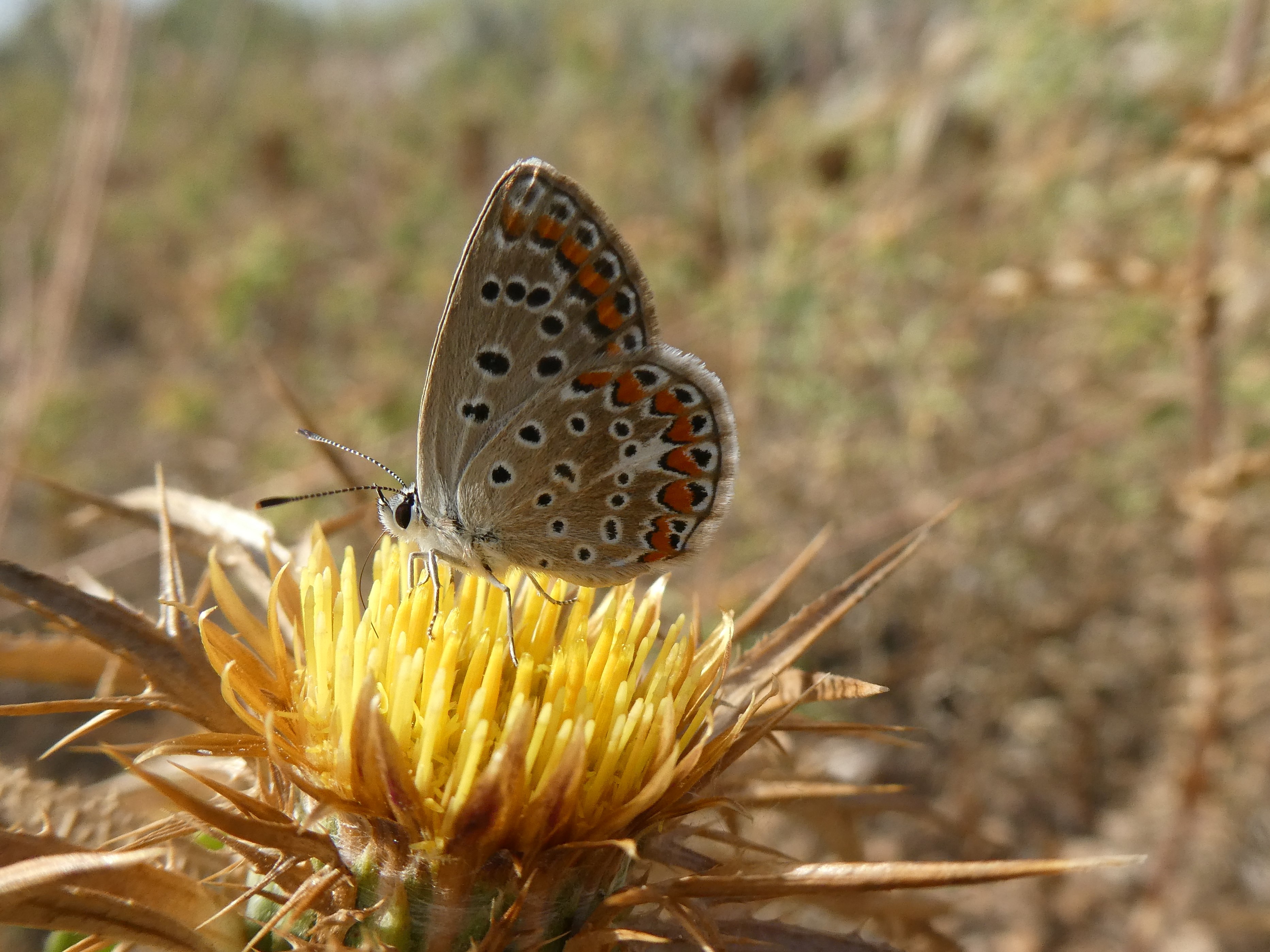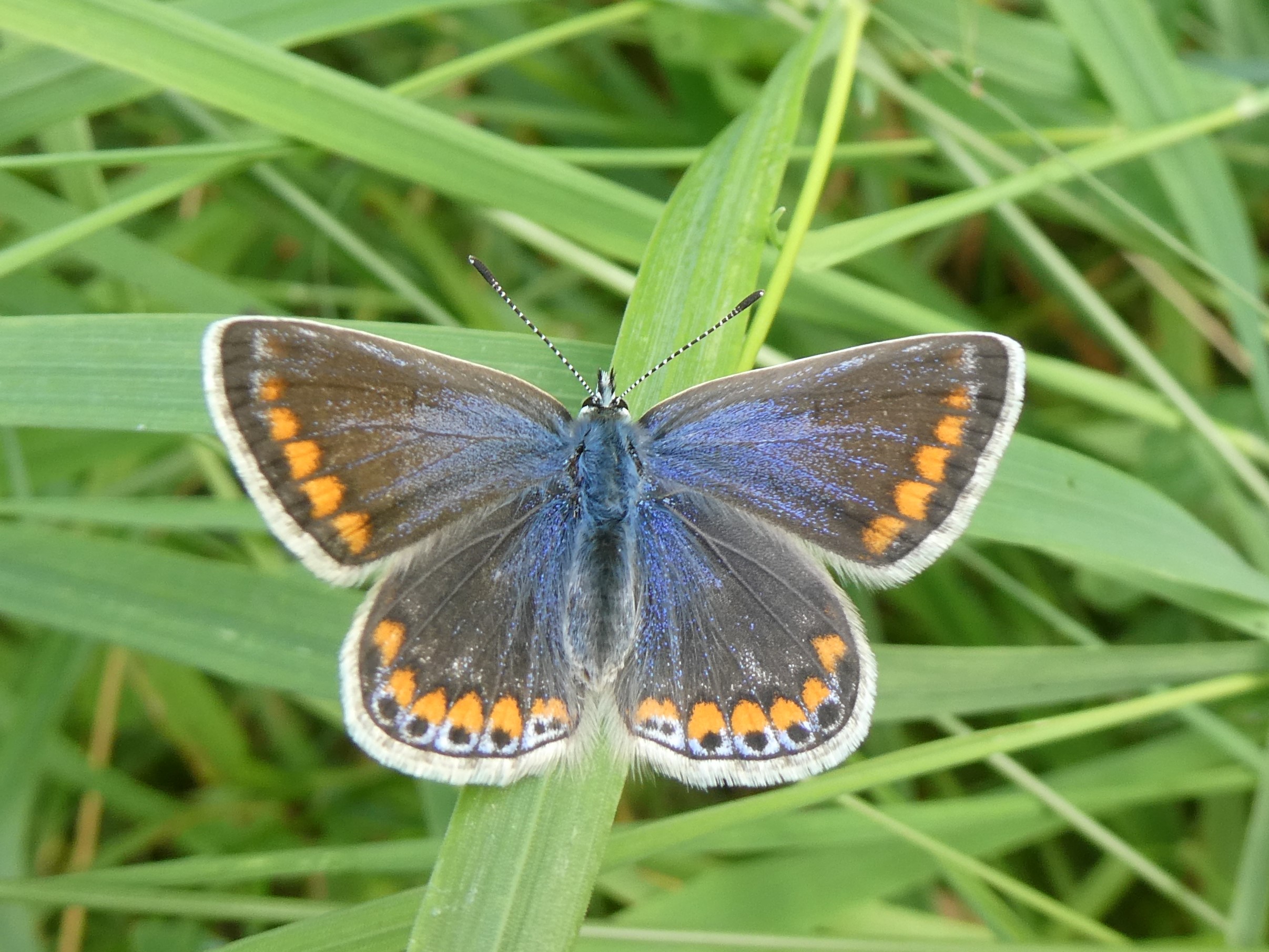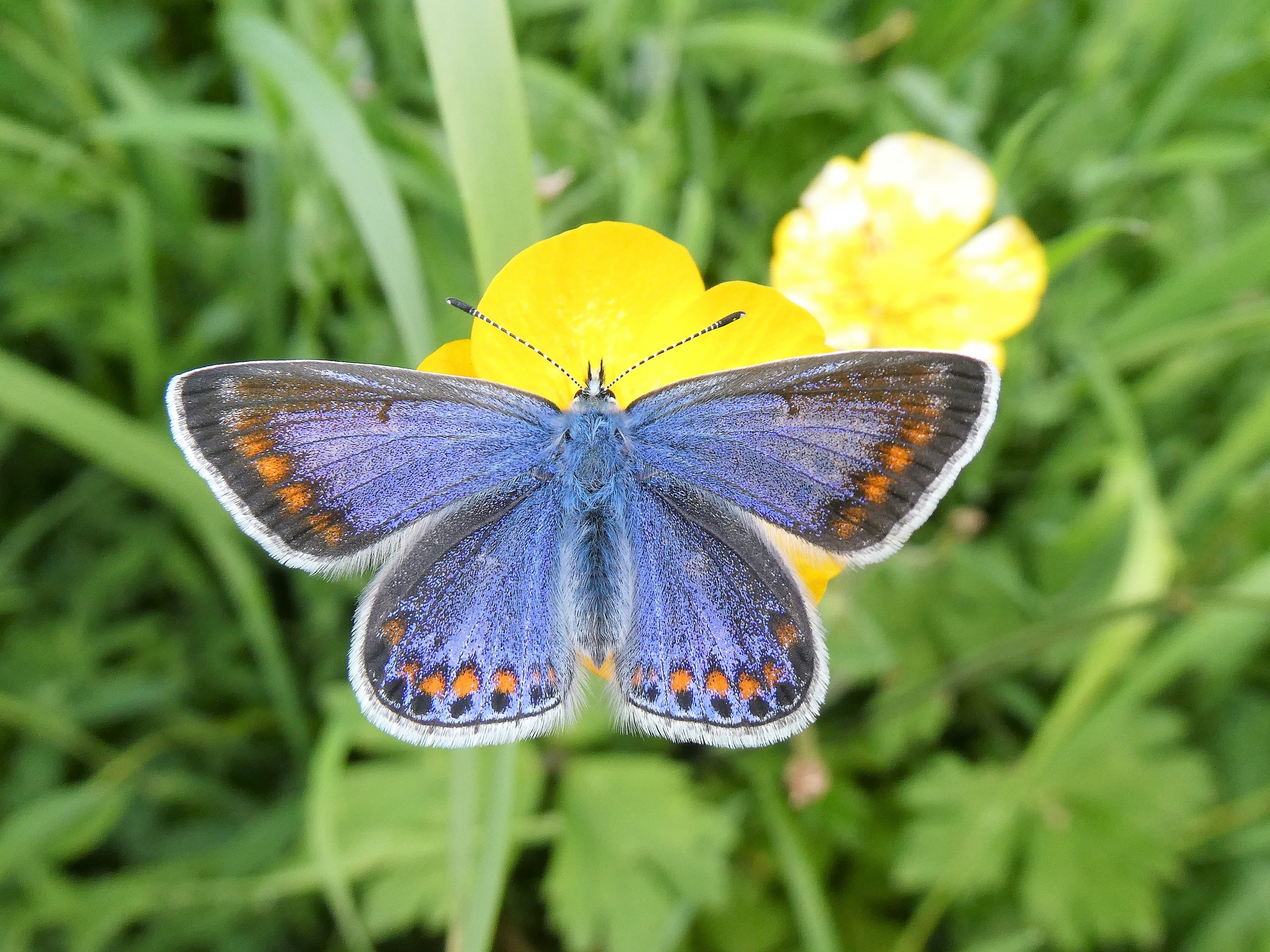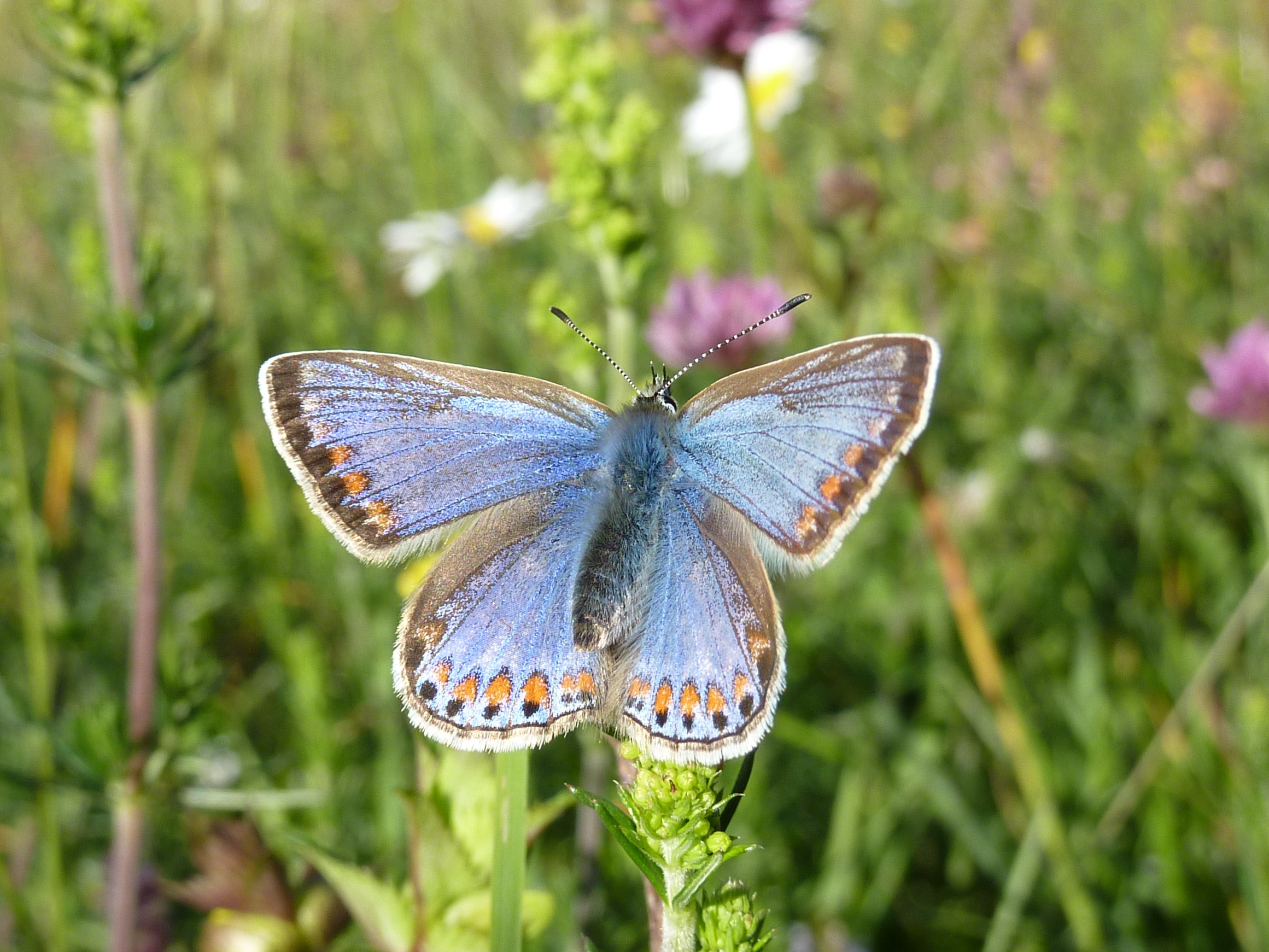(Note: this article has a glossary for the terms in bold.)
In the pre-COVID July of 2019, I spent a happy half-hour observing a ‘Common Blue Polyommatus icarus’ in a disused limestone quarry at Hondoq, Gozo. The early afternoon of July 19th 2019 was sweltering, with temperatures well into the 30s Celsius.
The lone freshly emerged Common Blue was staking out his territory, settling on a range of perch posts, all with a commanding view over the terrain. Luckily for me, he was not very active or shy, so I was able to get to within 20 mm, which enabled me to take some photographs. Even better, he opened his wings so I got a glimpse of his beautiful, gleaming blue uppersides-something this species will not often allow in in extreme heat when wings are usually kept closed to avoid overheating.
When I checked the photographs later on my laptop, I was surprised to see some differences with the Common Blue I am used to seeing. It was smaller but that is not too surprising because smaller adult specimens often arise when their larval foodplants are hit by drought. The blue was deeper than usual but the depth of colour of a blue butterfly often depends on light intensity and viewing angle so this is not particularly decisive.
However, the specimen had small but well-defined black spots near the edge of the upperside of the hindwing and black dusting along the outer edge of the forewing upperside, extending further inwards than usual; the typical male has a black pencil outline along the length of the outer edge and along part of the upper costal area of the forewing upperside.
After further checking, I realised that I was probably not looking at the Common Blue Polyommatus icarus, but at a species identified in 2008 by the Russian Academy of Science, Polyommatus celina. This study revised the status of Polyommatus icarus form celina to Polyommatus celina. This revision means that the butterfly is no longer regarded as a form of the Common Blue (it was formerly regarded as the celina form of the Common Blue) but as a new species.
The study found a difference of greater than 6% in the mitochondrial DNA between the Common Blue and Polyommatus celina, now referred to as the Southern Common Blue. This is a high degree of genetic divergence. The Russian study also found morphological differences (observable physical differences, such as the darkening on the upperside of the male forewing).



The recently identified Southern Common Blue uses Common Bird’s-foot-trefoil as a foodplant for its caterpillar, as does the Common Blue. On the Iberian peninsula at least, the two species occur in the same areas and mate. Introgression has been shown to occur in the Iberian peninsula. From personal observation, it appears both species may occur on Gozo too, but a 2011 study by Dinca et al. states that “The two species appear to completely exclude each other on islands”.
Perhaps the reason males were chosen for a comparison of wing characteristics is that these are far more consistent in male blues than in females so that any difference stands out. The Common Blue females in Ireland, for example, show remarkable variation. Some of the variations are shown here.
These two studies highlight the vital importance of conservation, which includes protecting not simply species but genetic diversity within species. Under the Wildlife Act 1976 Section 11 as amended by the Wildlife Amendment Act 2000 protection of biological diversity within species as well as between species is a function of the Minister. The amendment arose from Ireland’s ratification of the UN Convention on Biological Diversity in 1996 – a landmark convention for the conservation of the diversity of natural life on earth. Just one key issue here is that similar-looking butterflies have been found to be separate species. This can have important implications for conservation, especially when a species believed to be widely distributed and not in need of protection measures proves to be a separate and endangered butterfly. It is vital that genetic and morphological analysis continues to examine butterflies so that conservation needs can be clarified.
This analysis was responsible for separating two cryptic species that occur in Ireland, the Wood White, which has been shown to be confined to western limestone areas and the Cryptic Wood White, a much more widespread butterfly. There may be more to discover.
Look at the following photographs of the Common Blue found in Ireland. While the males appear similar in colouring, the butterfly varies in size, although this is a feature common to most species. The apex of the forewing often looks more pointed than in specimens found in England. However, females are highly variable. This variation occurs within populations, between seasons, years, localities and regions. Generally, females found in the north and west are ‘bluer’ than those found in the east and south, which are ‘browner’ on their uppersides.
These variations have been attributed to the Common Blue’s ecological adaptability. The extent of blue colouring in the female may correlate positively with cooler and or damper conditions during larval and pupal development. This would explain the prevalence of ‘blue’ females in north and west Ireland and NW Scotland. In these areas, the Common Blue is regarded as a distinct subspecies called mariscolore. This ranking is based on morphological features, the extensive blue on the females and the brighter blue of the males, the male’s larger size and more pointed forewing. Furthermore, this population might be single-brooded-it certainly is in Scotland and remains single-brooded even when reared in the south of England. This suggests a genetic difference, supporting the idea that NW Scottish Common Blue is a subspecies (or even a separate species?)
My records and breeding experiments and the records of many recorders do not support the idea that subspecies mariscolore is single-brooded in North-west Ireland. This does not mean that the Common Blue found in the west and north is genetically identical to populations found elsewhere in Ireland. The picture is very confused, however. Females referrable as subspecies mariscolore and females referable as the typical (nominate form) mainly ‘brown’ form are not infrequently found together, both in the west of Ireland and midlands. Subspecies are usually regarded as occupying a distinct geographical region, separate from other populations of the same species and having constant and clearly different characteristics. These populations are not meant to overlap with other subspecies or with the typical form of the species. However, butterflies do not always conform to definitions!
In the absence of genetic analysis, we need to keep open the possibility that we have additional blue subspecies or species, perhaps endemic, on our island. If a reason to protect genetic diversity within species is sought, surely this is one such reason, among others.
Enjoy the beauty below…





Glossary
Costal: the front/leading edge of the forewing/hindwing.
Endemic: a species found only in a limited geographical area (The tree Irish Whitebeam Sorbus hibernica occurs only in Ireland).
Form: any classification below the level of a subspecies that refers to ecological, seasonal or sexually dimorphic/polymorphic forms.
An ecological form is a form that develops in response to conditions in the butterfly’s environment. Thus, a darker colouring is often associated with a butterfly population that lives in a cooler, damper climate as an adaptation that enables a basking butterfly to absorb heat from the sun.
A seasonal form is a form that is associated with a multi-brooded species. Thus, the Large, Small and Green-veined Whites occur in two-three broods in one year, with progressive darkening of the dark markings over the season.
Sexually dimorphic forms are differences in wing markings (Large White) and colouring (Orange-tip) between the sexes.
Introgression: in genetics, this is the movement of a gene from one species into the gene pool of another by the repeated backcrossing of an interspecific hybrid with one of its parent species. Purposeful introgression is a long-term process; it may take many hybrid generations before the backcrossing occurs. Introgression differs from simple hybridisation. Over time, offspring with a genetic identity close to that of one of the two species will be achieved.
Mitochondrial DNA: DNA found in a unit of the cell outside the nucleus. The mitochondria produce energy for the cell.
Morphological: referring to the study of the appearance, size and shape.
Subspecies: A population occupying a distinct geographical region, separate from other populations of the same species, and having constant and clearly different characters. Such populations have the potential to interbreed and therefore cannot overlap.

